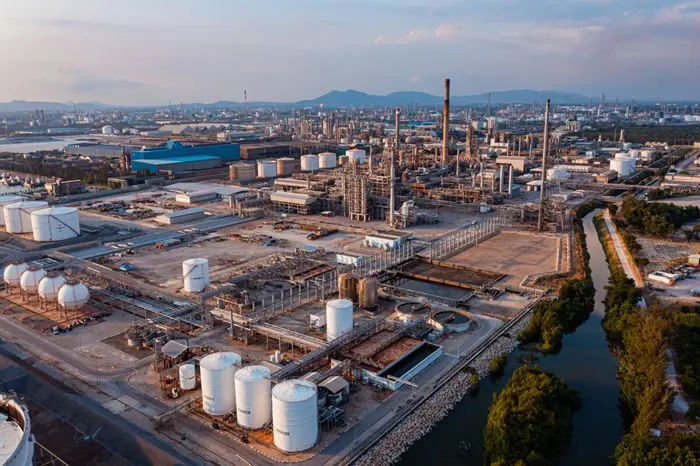Natural gas and crude oil are two of the most significant energy resources in the world. They play crucial roles in the global energy supply and are essential for numerous industries. Both are fossil fuels formed from the remains of ancient marine organisms, subjected to heat and pressure over millions of years. Despite their common origins, natural gas and crude oil differ in their properties, extraction methods, applications, environmental impact, and economic factors. This article will provide a comprehensive comparison between these two energy resources.
Properties of Natural Gas and Crude Oil
Composition and State
Natural gas is primarily composed of methane (CH4), with smaller amounts of other hydrocarbons such as ethane, propane, and butane. It exists in a gaseous state at standard temperature and pressure. Crude oil, on the other hand, is a complex mixture of hydrocarbons that are liquid at room temperature. It contains a variety of components, including alkanes, cycloalkanes, aromatics, and other compounds.
Energy Content
The energy content of natural gas and crude oil is measured in British Thermal Units (BTUs). Natural gas typically contains about 1,000 BTUs per cubic foot, while crude oil contains approximately 5.8 million BTUs per barrel. This difference in energy content affects their usage and transportation methods.
Extraction and Production
Natural Gas Extraction
Natural gas is extracted through drilling wells into underground reservoirs. Advances in drilling technology, such as hydraulic fracturing (fracking) and horizontal drilling, have significantly increased natural gas production. Fracking involves injecting high-pressure fluid into rock formations to release trapped gas, while horizontal drilling allows access to gas deposits that were previously unreachable.
Crude Oil Extraction
Crude oil extraction also involves drilling wells, but the process can be more complex due to the viscosity and density of the oil. Enhanced oil recovery techniques, such as water flooding, gas injection, and steam injection, are often used to increase the amount of oil that can be extracted from a reservoir. Offshore drilling platforms are used to access oil reserves beneath the ocean floor.
See Also: What Products Is Most Of The Crude Oil Production Converted Into?
Applications and Uses
Natural Gas Applications
Natural gas is used for various applications, including electricity generation, heating, and as an industrial feedstock. It is also used as a fuel for vehicles in the form of compressed natural gas (CNG) and liquefied natural gas (LNG). The high efficiency and lower carbon emissions of natural gas make it a preferred choice for power generation.
Crude Oil Applications
Crude oil is primarily refined into various petroleum products, such as gasoline, diesel, jet fuel, and heating oil. It is also used to produce lubricants, asphalt, and petrochemicals, which are essential for the manufacturing of plastics, synthetic rubber, and other materials. The versatility of crude oil makes it indispensable for the transportation and industrial sectors.
Environmental Impact
Natural Gas and the Environment
Natural gas is often considered a cleaner fossil fuel compared to crude oil and coal. When burned, it produces lower levels of carbon dioxide (CO2), sulfur dioxide (SO2), and nitrogen oxides (NOx). However, methane, the primary component of natural gas, is a potent greenhouse gas. Methane leaks during extraction, transportation, and distribution can negate the environmental benefits of natural gas.
Crude Oil and the Environment
The combustion of crude oil products releases significant amounts of CO2, SO2, NOx, and particulate matter, contributing to air pollution and climate change. Oil spills during extraction, transportation, and refining can have devastating effects on marine and terrestrial ecosystems. Efforts to mitigate the environmental impact of crude oil include stricter regulations, improved spill response techniques, and the development of cleaner refining processes.
Economic Factors
Market Dynamics
The markets for natural gas and crude oil are influenced by various factors, including supply and demand, geopolitical events, technological advancements, and regulatory policies. Crude oil prices are often more volatile due to its higher global demand and reliance on OPEC (Organization of the Petroleum Exporting Countries) production quotas. Natural gas prices are influenced by regional supply and demand dynamics, particularly in North America, Europe, and Asia.
Cost of Production
The cost of producing natural gas and crude oil varies depending on the location, geology, and extraction technology. Generally, natural gas production can be less expensive than crude oil production, especially in regions with abundant shale gas resources. However, the transportation and storage of natural gas, especially in liquefied form, can be costlier compared to crude oil.
Future Outlook
Renewable Energy Integration
Both natural gas and crude oil face increasing competition from renewable energy sources such as solar, wind, and hydroelectric power. The transition to a low-carbon energy system is driven by environmental concerns, government policies, and advancements in renewable energy technologies. Natural gas is often seen as a bridge fuel in this transition due to its lower carbon emissions compared to coal and oil.
Technological Innovations
Technological innovations play a crucial role in the future of natural gas and crude oil. Advances in drilling and extraction techniques, such as enhanced oil recovery and hydraulic fracturing, will continue to improve the efficiency and reduce the environmental impact of fossil fuel production. Additionally, carbon capture and storage (CCS) technologies can mitigate the emissions from natural gas and crude oil combustion.
Energy Security
Energy security is a critical consideration for countries that rely heavily on imported energy resources. Diversifying energy sources and increasing domestic production of natural gas and crude oil can enhance energy security. Strategic petroleum reserves and natural gas storage facilities also play a vital role in ensuring a stable energy supply during disruptions.
Conclusion
Natural gas and crude oil are essential energy resources with distinct properties, extraction methods, applications, environmental impacts, and economic factors. While natural gas is often considered a cleaner and more efficient energy source, crude oil remains indispensable due to its versatility and high energy content. The future of these fossil fuels will be shaped by technological innovations, renewable energy integration, and efforts to mitigate their environmental impact. Understanding the similarities and differences between natural gas and crude oil is crucial for making informed decisions about energy policy and resource management.
Related topics:






























